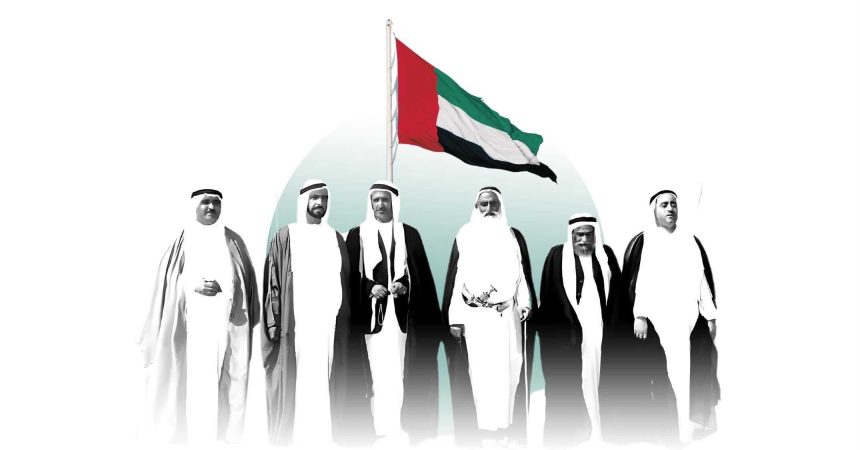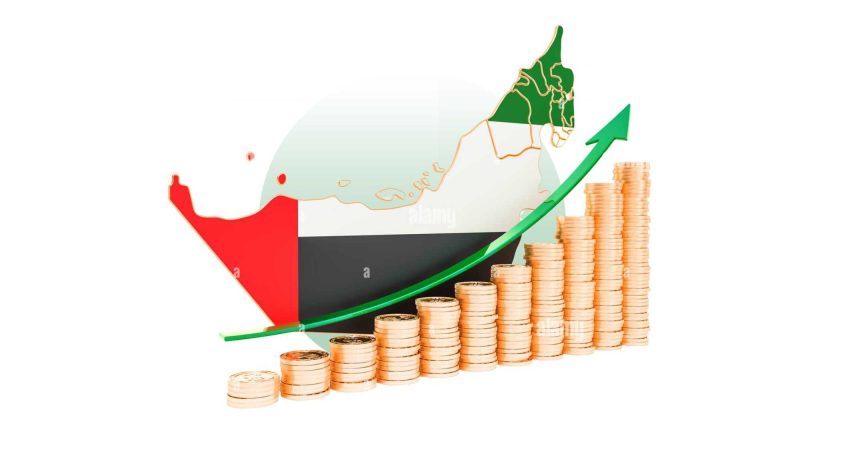Unity Under the leadership of Sheikh Zayed bin Sultan Al Nahyan
The history of the UAE is filled with challenges, high transformations and determination.
After the establishment of UAE on December 2, 1971, from the unifying six emirates: Abu Dhabi, Dubai, Sharjah, Ajman, Fujairah, and Umm Al-Quwain.
Ras Al Khaimah joined the emirates on 1972, which completed the union of the seven emirates under the leadership of Sheikh Zayed bin Sultan Al Nahyan.
This federation was providing stability and fostering collaboration in the region, during an era marked by rapid social and economic change.
Before unification, the emirates were primarily reliant on subsistence-based economies, focused on fishing, pearling, and small-scale agriculture.
However, the discovery of oil in the 1950s, particularly in Abu Dhabi, led the UAE to economic growth and modernization that define the UAE’s present.
History of the UAE Flag “Symbol of Unity and Pride”
The history of UAE is connected strongly with its flag, officially adopted on December 2, 1971, the same day the nation was founded,
The UAE flag consists of four colors: red, green, white, and black.
Those colors represent core values and characteristics that are essential parts of the country’s identity:
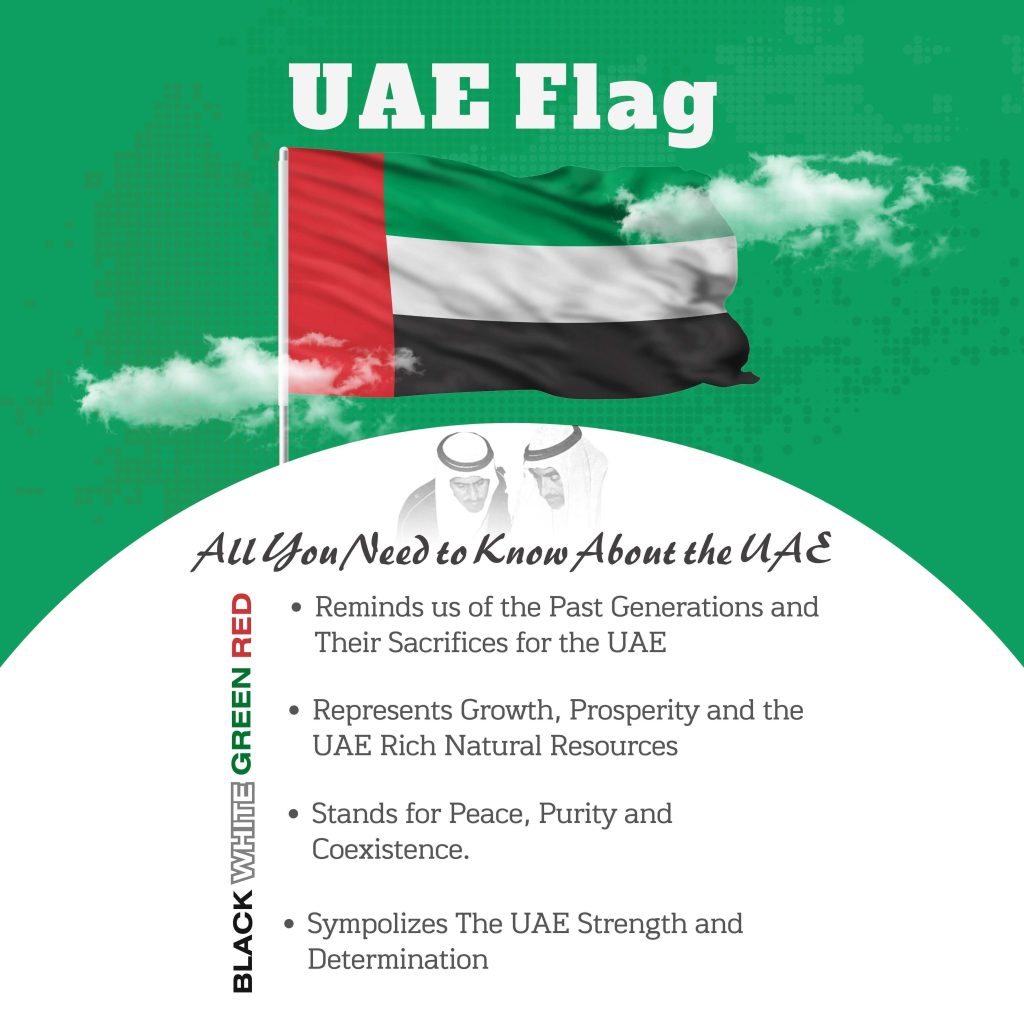
Red: This color symbolizes the past generations sacrifices in defending their homeland.
In the past, red was often associated with courage, bravery, and the region’s strength and resilience.
Today, it also honors the UAE’s continued commitment to security and stability in the Gulf region.
Green: Green represents growth, prosperity, and the UAE’s rich natural resources.
It also reflects the UAE’s vision of sustainable development.
As well as its dedication to preserving natural environment while fostering economic prosperity.
White: White is a symbol of peace, purity, and coexistence.
As the UAE makes strong efforts to enhance tolerance, peace, and cooperation internationally and locally.
White is also representing the nation’s peaceful coexistence with people from diverse cultures and backgrounds.
Black: Black symbolizes strength and determination, especially in the face of challenges.
It is also a reminder of the history of UAE which began from a region of small, disparate communities.
Now, those communities transformed to a united, prosperous nation with an influential global presence.
The UAE’s Economy History: From Oil to Diversification
The UAE economy started by the discovery of oil in Abu Dhabi in 1958.
This discovery has quickly transformed the nation’s fortunes.
By the 1970s, oil exports became a major contributor to the GDP.
Because it is funding infrastructure, healthcare, and education development.
In the recent decades, the UAE transformed toward economic diversification to reduce its dependency on oil.
This transformation included heavy investments in new sectors such as finance, tourism, logistics, and renewable energy.
For example, Dubai has evolved into a global business hub.
By new economic bases like Dubai International Financial Centre (DIFC) and Expo 2020 Dubai.
The UAE’s strategy of economic diversification has set a new standard in the region.
This standard focuses on a forward-looking approach to sustainable and diversified economic growth.

Green Innovations and Global Leadership
Sustainability has become a cornerstone of the UAE’s vision for the future.
The government launched many initiatives to reduce carbon emissions and invest in renewable energy sources.
Including Abu Dhabi’s Masdar City, a zero-carbon city that uses renewable energy, launched in 2006.
Moreover, the UAE has been an active participant in Paris Agreement.
It has set ambitious targets to increase renewable energy sources.
While Abu Dhabi Sustainability Week and Dubai’s Green Economy Initiative reflect the country’s commitment to addressing global climate challenges.
All of the UAE’s sustainable initiatives strengthened the UAE as a regional leader in sustainability and environmental innovation.
Fitch Ratings expects the Middle East economy to grow by more than 3% in 2025, with the UAE expected to lead the region. pic.twitter.com/p2KL8Pjua5
— UAE Voice (@uae_voiceeng) October 28, 2024
The History Of UAE Technological Growth
The UAE has made remarkable progress in technology, making it a regional tech hub.
The UAE technological transformation began in the 1990s and has been accelerated by many governmental initiatives.
Such as UAE Vision 2021 and UAE Centennial 2071.
Both of which are reflecting innovation, artificial intelligence (AI), and digital infrastructure.
While Dubai Internet City and Dubai Silicon Oasis were established to foster tech innovation.
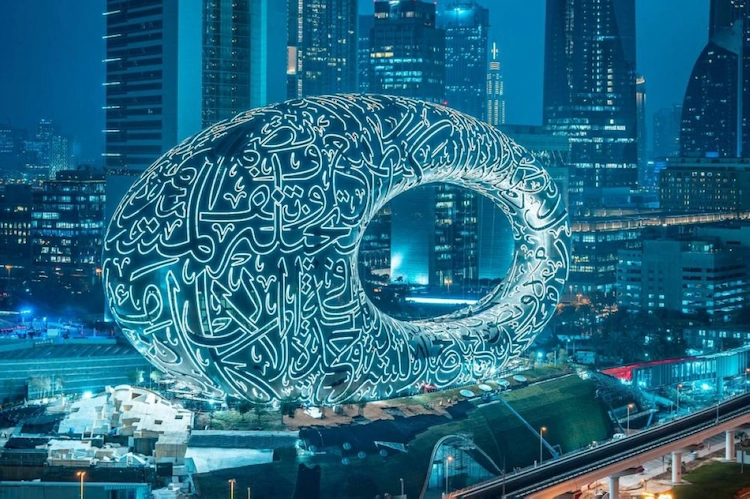
The country has also invested in AI, robotics, and space exploration.
By launching Emirates Mars Mission (Hope Probe) in 2020.
These advancements made the UAE a key player in shaping the future of technology.
The Best Global Tourism Destination
Tourism in the UAE has grown exponentially over the past few decades.
Cities like Dubai and Abu Dhabi have transformed into premier global tourist destinations.
During the early 2000s, Dubai invested heavily in tourism infrastructure.
Those investments included the establishment of iconic landmarks like Burj Khalifa, the Palm Jumeirah, and Burj Al Arab.
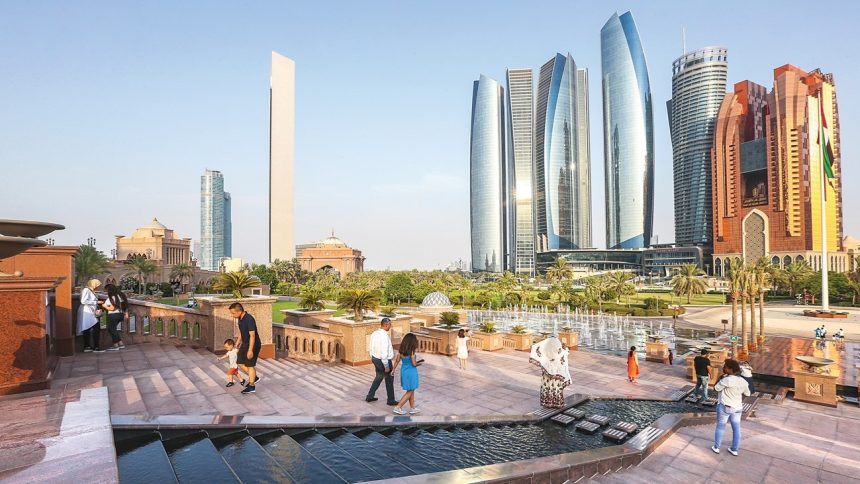
Abu Dhabi has also emerged as a cultural and leisure destination.
As it includes attractions like Louvre Abu Dhabi and Yas Island.
Now, tourism is a key pillar of the UAE’s diversified economy.
Every year, the UAE attracts millions visitors to visit the country for luxury experiences, unique attractions, and world-class hospitality.
The History of Sports in the UAE: Nurturing Talent and Hosting Global Events
Sports have played an important role in the UAE’s social and cultural landscape.
The country is investing heavily in sports infrastructure and international sporting events.
Dubai Tennis Championships, Abu Dhabi Grand Prix, and Dubai World Cup (horse racing) are just a few examples of world-renowned events hosted in the UAE.
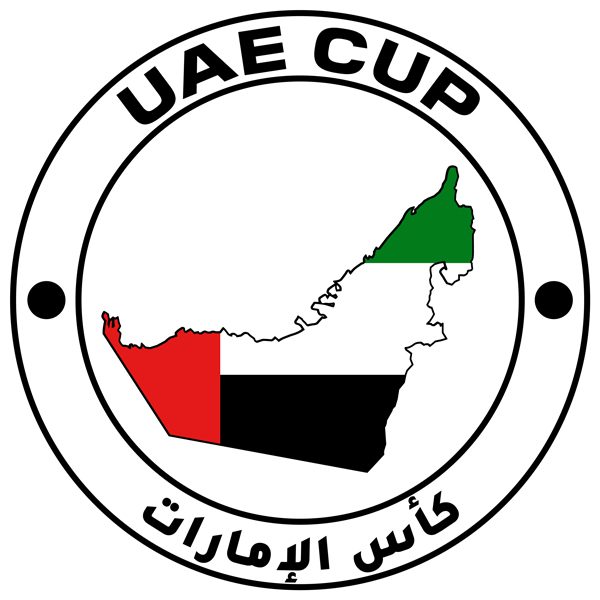
The country has also promoted local sports talent, besides expanding interest in sports like: cricket, football, and martial arts.
Mentioning that the UAE’s investment in sports aligns with its efforts to promote a healthy lifestyle.
Those investments are also contributing to its reputation as a dynamic and ambitious country on the global sports stage.
The history of UAE showcases its journey from a series of small desert communities to a global hub of commerce, technology, and culture.
Reflecting its leaders vision and people’s resilience.
Each part of its history—from the symbolism of its flag to its rapid economic and technological growth—reveals a nation firmly focused on unity, sustainability, and international influence.


